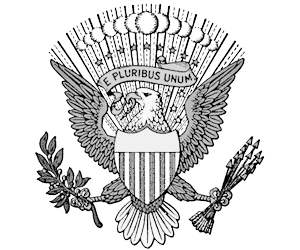|
|
|
|
|
Facts about
Cold War Arms Race During the Potsdam Conference Stalin was informed that the US had tested the Atomic Bomb but not that they intended to use it. This built a high level of distrust between the two nations. The United States wanted to show that it was stronger, more able and more intelligent than the USSR, and vice-versa. The competitive nature of the two nations led to the Cold War Arms Race in which both sides competed to develop more powerful weapons, new delivery systems and obtain more nuclear weapons. Various top secret projects and operations were introduced by both sides to monitor nuclear tests. 'Project Mogul' was one such operation which involved the use of microphones flown on high-altitude balloons for the long-distance detection of sound waves, designed to monitor soviet nuclear tests and later replaced by seismic detectors in Project Skyhook. By 1953, America was spending $50 billion on the Cold War Arms Race, whilst the USSR was spending $25 billion. The first atomic bombs were delivered by bomber aircraft. Both the Americans and the Soviets began to develop missile technology that could put rockets in space with new possibilities for the delivery of nuclear weapons. An intercontinental ballistic missile is a long-range missile capable of sub-orbital flight. During the Cold War Arms Race, these missiles could be fired from the US to hit targets in Europe and Soviet Russia, and vice versa. The launch of an orbital satellite was an inevitable stage in the Cold War Arms Race with the development of rocket technology. The Soviet Union launched the first artificial Earth satellite - Sputnik-1. The Soviet launch of Sputnik triggered the Space Race.
The Arms
Race Facts
for kids: The Missile Gap
(1957)
The Arms
Race Facts
for kids: MAD
(Mutually Assured Destruction)
The Cold
War Facts
for kids: Cold War Arms
Race Timeline 1942: The Manhattan Project was established in the US and its scientists led by Robert Oppenheimer developed the Atomic Bomb. 1945: The first atomic bomb was detonated in a test at Alamagordo, New Mexico, on July 16, 1945 1945: The second atomic bomb was dropped over Hiroshima on August 6, 1945 1945: The third bomb was dropped over Nagasaki on August 9, 1945 1946: Operation Crossroads nuclear tests at Bikini Atoll in the Marshall Islands. The "Able" test detonation was on July 1, 1946 and the "Baker" test was detonated on July 25, 1946 1949: USSR tests its first atomic bomb 1952: USA tests its first hydrogen bomb - the Mike Shot thermonuclear device 1953: USSR tests its first hydrogen bomb - known as the Joe-4 thermonuclear device 1957: USSR tests its first intercontinental ballistic missile capable of sub-orbital flight 1957: USA tests its first intercontinental ballistic missile 1957: USSR launch Sputnik, the first orbital satellite 1960: 1 May 1960: U-2 Incident - USAF spy aircraft shot down over USSR 1961: USSR test 'Tsar Bomba' meaning ‘King Bomb’ a 50-megaton nuclear weapon 1962: Cuban Missile Crisis (October 16 1962 - October 28 1962) Soviet missiles placed in Cuba, and US missiles in Turkey 1968: USA develop MIRV systems that put several warheads on a single launcher to strike widely dispersed targets 1968: The Nuclear Non-Proliferation Treaty was signed on July 1, 1968 when powers with nuclear weapons agreed not to give any other countries nuclear technology. 1972: SALT Treaty: Adhering to the policy of Detente, the Anti-Ballistic Missile treaty (ABM), and the Interim Agreement on the Limitation of Strategic Offensive Arms set limits on the number of intercontinental ballistic missiles each side could develop. 1975: USSR develop MIRV systems 1975: Brezhnev and Carter sign the SALT II treaty. 1982: Strategic Arms Reduction Talks (START) began, aimed at strategic nuclear disarmament, and were conducted from June 29, 1982 – June 1991 1983: USA propose Strategic Defense Initiative (Star Wars) requiring space and earth based laser battle stations. The Soviets bring the ailing nation to the point of bankruptcy in their attempts to match the SDI. 1991: Fall of the USSR and end of the Cold War Arms Race |
| US American History |
| 1945-1993: Cold War Era |
|
|
|
|
|
First Published2016-04-19 | |||
|
Updated 2018-01-01 |
Publisher
Siteseen Limited
| ||
|
|

